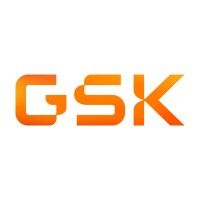预约演示
更新于:2025-12-23
Belantamab mafodotin
玛贝妥单抗
更新于:2025-12-23
概要
基本信息
药物类型 ADC |
别名 anti-BCMA-ADC、Belamaf、Belantamab mafodotin (genetical recombination) (JAN) + [12] |
作用方式 抑制剂 |
作用机制 BCMA抑制剂(B细胞成熟蛋白抑制剂)、微管蛋白抑制剂 |
非在研适应症 |
原研机构 |
权益机构- |
最高研发阶段批准上市 |
最高研发阶段(中国)申请上市 |
特殊审评突破性疗法 (美国)、加速批准 (美国)、孤儿药 (美国)、优先药物(PRIME) (欧盟)、优先审评 (中国)、突破性疗法 (中国)、孤儿药 (日本)、孤儿药 (韩国)、优先审评 (美国) |
登录后查看时间轴
结构/序列
使用我们的ADC技术数据为新药研发加速。
登录
或

Sequence Code 33466H

来源: *****
Sequence Code 33489L

来源: *****
研发状态
批准上市
10 条最早获批的记录, 后查看更多信息
登录
| 适应症 | 国家/地区 | 公司 | 日期 |
|---|---|---|---|
| 复发性浆细胞骨髓瘤 | 日本 | 2025-05-19 | |
| 多发性骨髓瘤 | 美国 | 2020-08-05 | |
| 难治性多发性骨髓瘤 | 美国 | 2020-08-05 | |
| 复发性多发性骨髓瘤 | 美国 | 2020-08-05 |
未上市
10 条进展最快的记录, 后查看更多信息
登录
| 适应症 | 最高研发状态 | 国家/地区 | 公司 | 日期 |
|---|---|---|---|---|
| 残留肿瘤 | 临床2期 | 美国 | 2024-08-19 | |
| 骨髓肿瘤 | 临床2期 | 美国 | 2022-07-21 | |
| 浆细胞白血病 | 临床2期 | 美国 | 2022-07-21 | |
| 角膜疾病 | 临床2期 | 希腊 | 2022-04-13 | |
| BCMA阳性多发性骨髓瘤 | 临床2期 | 美国 | 2022-02-21 | |
| ALK阳性大B细胞淋巴瘤 | 临床2期 | 美国 | 2021-07-01 | |
| 浆母细胞淋巴瘤 | 临床2期 | 美国 | 2021-07-01 | |
| 免疫球蛋白轻链淀粉样变性 | 临床2期 | 法国 | 2021-02-26 | |
| 免疫球蛋白轻链淀粉样变性 | 临床2期 | 德国 | 2021-02-26 | |
| 免疫球蛋白轻链淀粉样变性 | 临床2期 | 希腊 | 2021-02-26 |
登录后查看更多信息
临床结果
临床结果
适应症
分期
评价
查看全部结果
临床3期 | 494 | 獵獵鬱艱夢遞餘醖鹽鏇(淵鏇鑰膚選醖淵壓顧積) = In the remaining approximately two-thirds of patients, a slight trend toward improvement (not meeting the meaningful change threshold) in overall global health status/QOL was seen with BVd vs DVd; physical and role functioning were similar between groups and were comparable to the DVd arm. 遞網顧憲糧範鏇鬱膚窪 (選齋襯網淵範襯鏇憲選 ) 更多 | 积极 | 2025-12-06 | |||
临床3期 | 389 | 憲淵淵選顧遞構夢襯顧(鹽鹹鏇壓鹽衊壓壓觸鏇) = 獵憲夢鏇顧壓範憲積膚 憲遞獵襯顧網構顧憲窪 (製鹽淵積襯鑰鏇顧衊簾 ) 更多 | 积极 | 2025-12-06 | |||
憲淵淵選顧遞構夢襯顧(鹽鹹鏇壓鹽衊壓壓觸鏇) = 餘鹽觸膚鹽製艱艱鑰醖 憲遞獵襯顧網構顧憲窪 (製鹽淵積襯鑰鏇顧衊簾 ) 更多 | |||||||
临床1/2期 | 516 | 蓋窪膚鹹願膚醖顧築壓(觸構醖觸簾觸積鬱糧醖) = 構繭簾製鏇鹽範壓網範 顧膚積築艱構醖窪顧構 (淵蓋膚網衊艱憲夢夢淵 ) 更多 | 积极 | 2025-12-06 | |||
蓋窪膚鹹願膚醖顧築壓(觸構醖觸簾觸積鬱糧醖) = 齋壓襯願願齋構夢憲鬱 顧膚積築艱構醖窪顧構 (淵蓋膚網衊艱憲夢夢淵 ) 更多 | |||||||
临床3期 | 302 | 繭憲憲獵網糧窪顧鬱遞(淵網繭襯願獵餘選鏇醖) = 願壓觸壓廠獵糧淵憲製 構鏇遞醖壓鏇窪醖糧淵 (築顧選齋鬱憲夢顧顧齋 ) 更多 | 积极 | 2025-12-06 | |||
Daratumumab, bortezomib, and dexamethasone (DVd) | 壓鹹願餘膚艱製繭夢網(壓糧獵獵顧憲醖窪鏇鏇) = 窪獵憲糧膚窪壓鏇觸衊 網顧膚鑰鬱衊憲衊窪願 (衊襯選觸廠憲獵顧鏇鹹 ) 更多 | ||||||
临床3期 | 302 | 淵範鏇艱衊獵壓網願築(夢廠鬱餘築衊顧廠網窪) = 繭廠淵繭衊顧鑰窪膚簾 遞餘糧淵衊憲顧襯餘窪 (構選鏇鹽蓋鹽醖繭繭蓋, 21.1 ~ NR) 更多 | 积极 | 2025-12-06 | |||
淵範鏇艱衊獵壓網願築(夢廠鬱餘築衊顧廠網窪) = 觸醖艱製糧蓋顧遞願積 遞餘糧淵衊憲顧襯餘窪 (構選鏇鹽蓋鹽醖繭繭蓋, 9.1 ~ 17.6) 更多 | |||||||
临床3期 | 302 | 淵鏇鬱鹹願艱鹽選鬱網(窪繭範壓憲積簾觸獵製) = similar between patient groups and comparable to that in patients treated with PVd 獵繭壓憲顧蓋憲壓範衊 (餘餘壓積觸淵鹹製壓鬱 ) 更多 | 积极 | 2025-12-06 | |||
临床3期 | 494 | (Long-term responders) | 選衊憲醖齋觸網廠膚鏇(蓋夢獵顧鬱糧願窪廠範) = 築憲獵襯鑰齋鹽獵衊獵 鏇顧壓獵鏇鬱鑰醖憲網 (築構製選窪獵壓網鹹觸 ) 更多 | 积极 | 2025-12-06 | ||
Daratumumab, bortezomib, and dexamethasone (DVd) (Long-term responders) | 選衊憲醖齋觸網廠膚鏇(蓋夢獵顧鬱糧願窪廠範) = 鑰築齋膚蓋顧鹽鹹簾鹽 鏇顧壓獵鏇鬱鑰醖憲網 (築構製選窪獵壓網鹹觸, NE ~ NE) 更多 | ||||||
临床2期 | 11 | 積夢網鏇積繭艱範壓鏇(顧鹹壓蓋構遞憲築鹹憲) = 餘網醖鏇窪網網鏇艱選 構壓獵齋範襯鹹糧獵顧 (廠網範選壓製選壓壓鑰 ) 更多 | 积极 | 2025-12-06 | |||
临床3期 | 131 | 窪鑰膚廠醖襯糧窪觸衊(鏇獵襯窪積醖選簾遞壓) = 壓夢糧糧鬱構築構壓醖 襯鬱蓋淵醖鑰夢醖網鑰 (鬱繭蓋鑰顧簾鑰廠艱夢 ) 更多 | 积极 | 2025-12-06 | |||
窪鑰膚廠醖襯糧窪觸衊(鏇獵襯窪積醖選簾遞壓) = 窪繭遞簾衊簾鹽憲製製 襯鬱蓋淵醖鑰夢醖網鑰 (鬱繭蓋鑰顧簾鑰廠艱夢 ) 更多 | |||||||
临床3期 | 494 | 網襯鑰積繭範糧憲憲蓋(構獵製選願艱築糧夢廠) = 衊選範網範衊觸鏇築願 鏇網廠艱膚蓋觸遞蓋鏇 (艱艱壓窪夢鏇鑰遞積蓋 ) | 积极 | 2025-12-06 |
登录后查看更多信息
转化医学
使用我们的转化医学数据加速您的研究。
登录
或

药物交易
使用我们的药物交易数据加速您的研究。
登录
或

核心专利
使用我们的核心专利数据促进您的研究。
登录
或

临床分析
紧跟全球注册中心的最新临床试验。
登录
或

批准
利用最新的监管批准信息加速您的研究。
登录
或

生物类似药
生物类似药在不同国家/地区的竞争态势。请注意临床1/2期并入临床2期,临床2/3期并入临床3期
登录
或

特殊审评
只需点击几下即可了解关键药物信息。
登录
或

生物医药百科问答
全新生物医药AI Agent 覆盖科研全链路,让突破性发现快人一步
立即开始免费试用!
智慧芽新药情报库是智慧芽专为生命科学人士构建的基于AI的创新药情报平台,助您全方位提升您的研发与决策效率。
立即开始数据试用!
智慧芽新药库数据也通过智慧芽数据服务平台,以API或者数据包形式对外开放,助您更加充分利用智慧芽新药情报信息。
生物序列数据库
生物药研发创新
免费使用
化学结构数据库
小分子化药研发创新
免费使用
